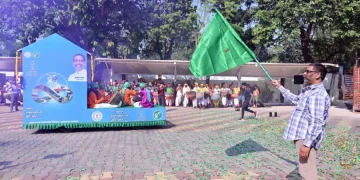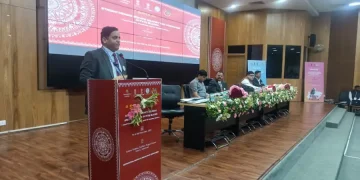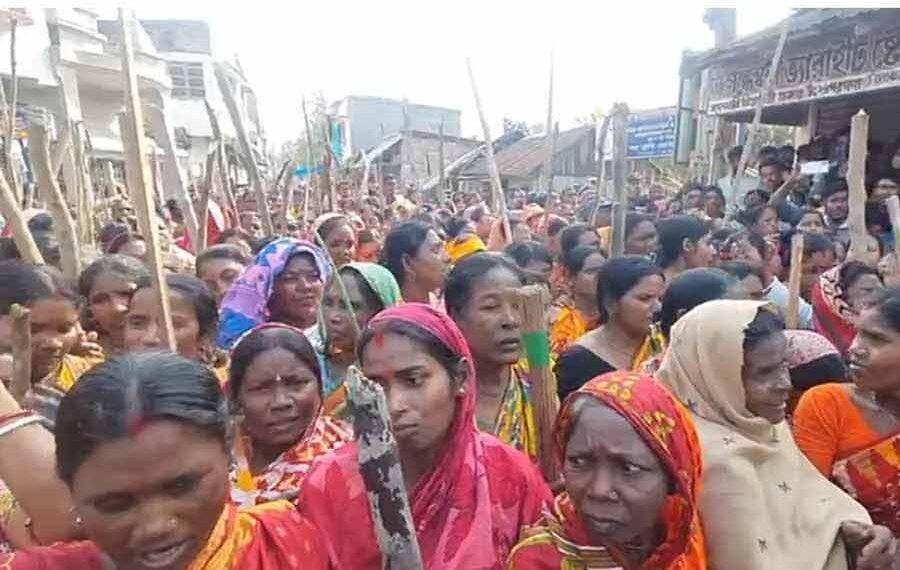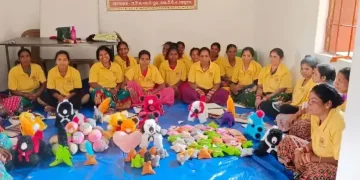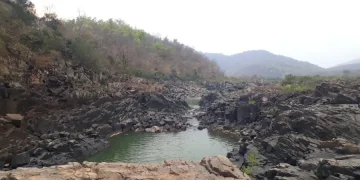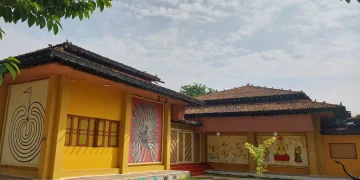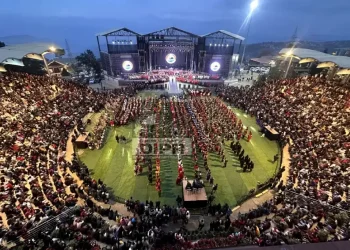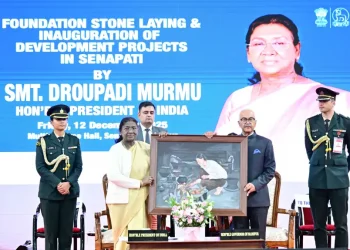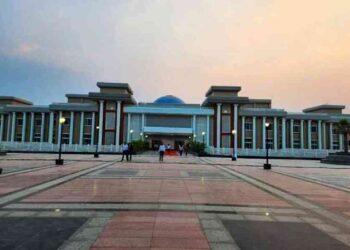Kolkata
This semi-urban region hit the national headlines when locals came out in large numbers and gheraoed the local police station in protest against local Trinamool Congress toughies Sheikh Shahjahan and his two henchmen Shibu Hajra and Uttam Sardar.
Two things were most striking in this case. First, the agitators were mostly and perhaps entirely women. Second, they came with bamboos, tree branches, kitchen tools, sickles and whatever they could lay their hands on. In all probability, they had not come not to attack but to register their protest. Protest against politician-aided tyranny.
Local-Speak
Ask Shampa Sardar, Sushma Singha, Nirmala, Banalata Sardar, Jharna (their names changed), and all explode in one go telling how they had been subject to untold exploitation that often degenerated into sexual tyranny.
“Didi our life is a hell. It is even worse than that of those animals we graze in the fields … they have taken large swathes of our lands that the State gave our ancestors in Patta,” complains Shampa a tribal homemaker.
Then Sushma, a 40-somethings woman — tribulations of a hard life make her appear a 60-year-old — butts in.
“Nangta lajja, bhoy paina (a sans-culotte has no shame or fear). We have lost everything…our lands, money and shame. They first took our canals and brought in the salty water of the river rendering our lands uncultivable. Then they demanded the useless lands on lease. They told us that the infertile land would bear gold. When we reluctantly agreed (as we had no other way), they dug up fisheries there. So many years have passed but we have not been paid our lease money,” Sushma says.
A third, Jharna, informs how “when our men go to ask for the money they are beaten up and if we continue to press for our demands they take the women to the party office for enjoyment”.
There were mainly three allegations by then: Firstly, the women complained of land-grab, secondly, they alleged extortion and forced labour, and thirdly, and most shockingly, sexual exploitation.
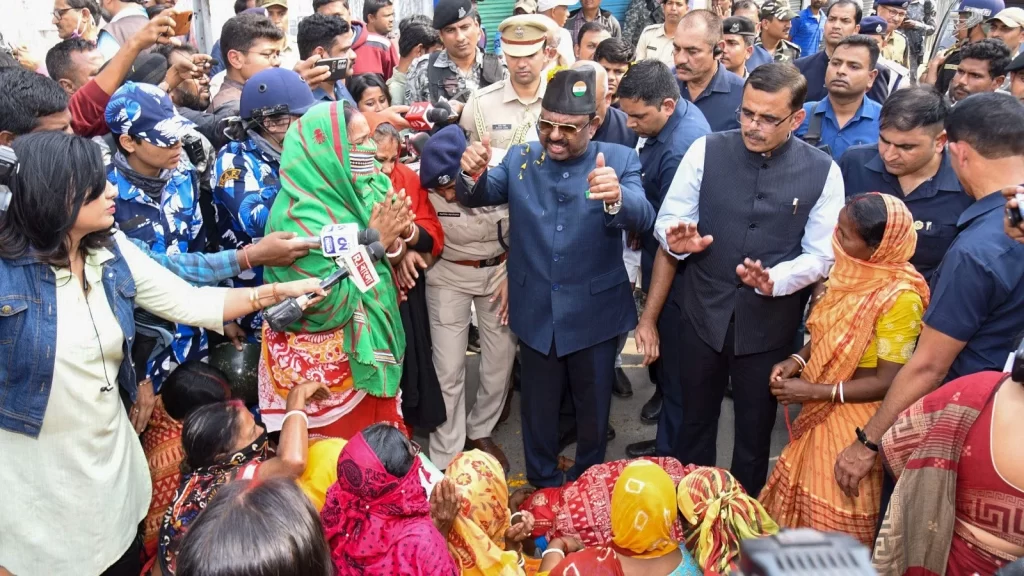
Land Grab Modus Operandi
Anima Sardar (name changed) says, “First they brought in drilling machines and JCBs. They cut the embankments and let in salty water from the Raimangal River rendering the whole three-crop land infertile. This led us to distress leasing as we leased out these lands to Shahjahan Bhai, Shibu and Uttam Sardar. They promised us money in lieu of that but in most of the cases that money would not come. Any reminder would be met with kidnapping and beating.” She even alleges about two persons having been murdered by their men.
“As though land-grabbing was not enough they would send in their henchmen to survey every home and if there was any beautiful woman, primarily a young wife or a girl, they would take them to the party office. They will keep that woman there night after night till they were satisfied. You have to go or your men will be given broken limbs. You have to serve them for nights on end and after they are contented, your men are asked to go back home but with no guarantee that you will not be called back again,” the women allege.
“There logic was simple: ‘You may be the husband, but she will have to serve us,” says Aparna Singha, another woman adding “We have lost our honour, our money, our livelihood and if we are still alive that is because of our children. Their fathers who once owned bighas of cultivable lands today are working as migrant labourers in Chennai or Punjab or Gujarat. We want safety.”
They have grabbed about 2,500 bighas — roughly 1,200 acres— of land or even more along a five km stretch, one is told. And that is not only a single case. Always on the prowl the motorbike-ridden intruders ask for forced labour in the leaders’ manors.
Reactions Of Judiciary And The Powers That Be
After visiting the area, Bengal Governor CV Ananda Bose said: “What I saw was ghastly, shocking, shattering to my senses. I saw something which I should never have seen; I heard many things which I should never have heard. This is a shame for a civil society.”
The Calcutta High Court too took suo moto cognizance of newspaper reports on alleged sexual harassment of women even as the single bench of Justice Apurba Sinha Ray appointed an amicus curiae, and issued notice to the authorities.

A “grossly disappointed,” Justice Apurba Sinha Ray of Calcutta High Court observed how: “Considering all the aspects I am constrained to take suo moto cognizance over the alleged incidents in respect of the allegation of sexual assaults of ladies in Sandeshkhali … at gun points and transfer of lands of tribal people in violation of relevant laws.” The matter is still being heard.
The Chairperson of National Commission for Scheduled Castes Arun Haldar after visiting the area and submitting a report before President Droupadi Murmu remarked how the incidents were a fit case to attract imposition of President’s Rule in the State.
Panels of all hues including the NCSC, NHRC and the Commissions for women and children showed their concerns and undertook spot visits. The National Commission for Scheduled Tribes made a much delayed visit.
West Bengal Chief Minister Mamata Banerjee blamed BJP’s ideological mentor, the RSS, for fomenting trouble in Sandeshkhali even as her dispensation blocked BJP and Congress delegations from visiting the affected village. The BJP took up the issue even at its ongoing national convention in the presence of Prime Minister Narendra Modi.
A total of 18 arrests have been made in the Sandeshkhali case. Both Shibu Hajra and Uttam Sardar have been arrested but the main accused Sheikh Shahjahan continues to be absconding. Will he be arrested? Will the victims get justice? Only time will tell.
Knowing Sandeshkhali
- Sandeshkhali II Block has an area of 197.21 km2 . It has 1 panchayat samity, 8 gram panchayats, 103 gram sansads 24 inhabited villages with a sizeable number of tribal population.
- As per the 2011 Census, Sandeshkhali II had a total scheduled caste population of 72,000 (45%) while the number of Scheduled Tribes living in the area was 37,695 (23.42%). This excludes the 42,000 odd tribal people of Sandeshkhali I block where the topography, economy and polity is almost the same.
- While 71 percent of the population lives on cultivation about 3 percent people thrive on agriculture-related cottage industry. The rest are daily wagers engaged in fishing, construction, brick kilns etc.
- In 2010-11, persons engaged in agriculture in Sandeshkhali II Block could be classified as Bagadars, small farmers and agricultural labourers. Fisheries included a sizeable part of livelihood engaging a good number of tribal population who apart from tilling lands enagaed in fishing.
- Insofar as transport is concerned, Sandeshkhali II has 13 ferry services to reach the mainland from where buses and trains can be availed of.
- Sandeshkhali has a rural hospital and 2 primary health care centres, 35 family welfare sub-centres.






